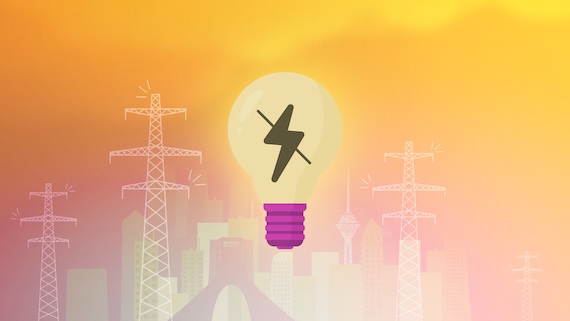As power fails and nutrition falters, Iranians confront a summer of extreme heat, rolling outages, and dwindling access to basic food
( Globalvoices.org ) – Iran is staring down a dual crisis: a record-breaking electricity shortfall threatening homes and businesses, and a deepening nutritional decline that has left millions without access to essential food. As blackouts roll across the country and temperatures soar, energy officials are advising citizens to brace for the heat with traditional cooling tools like hand fans and water jugs. At the same time, families are struggling to afford meat and dairy, with consumption plummeting amid rising poverty.
Iran’s electricity grid is facing a historic shortfall of 25,000 megawatts. Daily blackouts are becoming the norm, and the looming summer heat threatens to further strain an already collapsing system, according to a recent report by Iran Open Data.
This is no seasonal hiccup. The crisis stems from over a decade of structural decline. Power demand has consistently outpaced supply since 2018, with deficits peaking at 25 percent in summer and 15 percent in winter. Meanwhile, subscriber numbers are growing by up to 1 million annually, while electricity consumption is doubling the rate of power generation.

Power production growth has dwindled to a mere 2 percent per year. Even if Iran were to import the entire output of neighboring countries like Azerbaijan, Armenia, and Turkmenistan, the shortfall would persist. Experts estimate that closing the gap would require a fivefold increase in power generation growth sustained over the next decade.
What’s causing the collapse?
Iran suffers from overdependence on fossil fuels. Over 90 percent of Iran’s electricity comes from thermal power plants. Renewables and nuclear energy make up just 1 percent each, with hydropower hampered by droughts and low reservoir levels.
Meanwhile, roughly 13 percent of electricity is lost in transmission, nearly 40 percent of total household usage. Furthermore, about 14.5 percent of electricity is generated in plants operating below 20 percent efficiency. Thermal plant efficiency remains under 40 percent, improving by only 0.1 percent annually.
Despite domestic blackouts, Iran continues to export electricity to plug budget holes.

In response, the government has adjusted public office hours and declared Thursdays off in some provinces. But critics argue these are short-term fixes for a long-term problem.
Mehdi Masaeli, head of Iran’s power industry syndicate, described the crisis as beyond quick fixes, calling it a “deep surgical case” with no rapid cure. His warning: brace for a very hard summer.
A worsening nutrition crisis
Parallel to the energy collapse, another report by Iran Open Data shows that Iran is grappling with a severe nutritional crisis. Red meat consumption has dropped by 40 percent over the past decade. In 2023, Iranians consumed just 8.76 kg (19 lb) of red meat per person, compared to 39 kg (86 lb) in the U.S. and 29 kg (64 lb) in Turkey.

Illustration courtesy of Iran Open Data.
This dietary shift reflects a broader socioeconomic crisis. According to the Iranian Parliament Research Center, 30 percent of Iranians lived below the poverty line in 2022, and half the population consumed fewer calories than recommended standards. The country’s average daily calorie intake dropped from 2,700 in 2011 to under 2,200 in 2022.
Food and Agriculture Organization (FAO) data confirms a significant dietary regression: the average Iranian now eats 50 percent less meat than their Turkish counterparts.

Despite a 133 percent surge in red meat imports last year, per capita consumption remains 28 percent below mid-2010s levels. Chicken has replaced red meat as the dominant animal protein. In 1989, red meat consumption was double that of chicken; today, chicken is three times more prevalent.

Illustration courtesy of Iran Open Data.
Dairy consumption has also fallen by 30 percent since 2010, driven by affordability issues and shifting export priorities. Turkey’s per capita dairy consumption is now 3.5 times higher than Iran’s, aided by robust public programs targeting vulnerable populations. Iran, meanwhile, exports four times more milk than it did a decade ago, even as domestic needs go unmet.
Zooming out: A country under pressure
From electricity to nutrition, the warning signs are everywhere. Iran’s crises are being fueled by structural inefficiencies, economic hardship, international sanctions, and environmental stressors. As households cope with daily blackouts and shrinking food baskets, the combined toll on public health, productivity, and social stability is mounting.
In the face of a stifling summer, many Iranians are being left with little more than hand fans, water jugs, and empty plates.
Via Globalvoices.org


 © 2025 All Rights Reserved
© 2025 All Rights Reserved